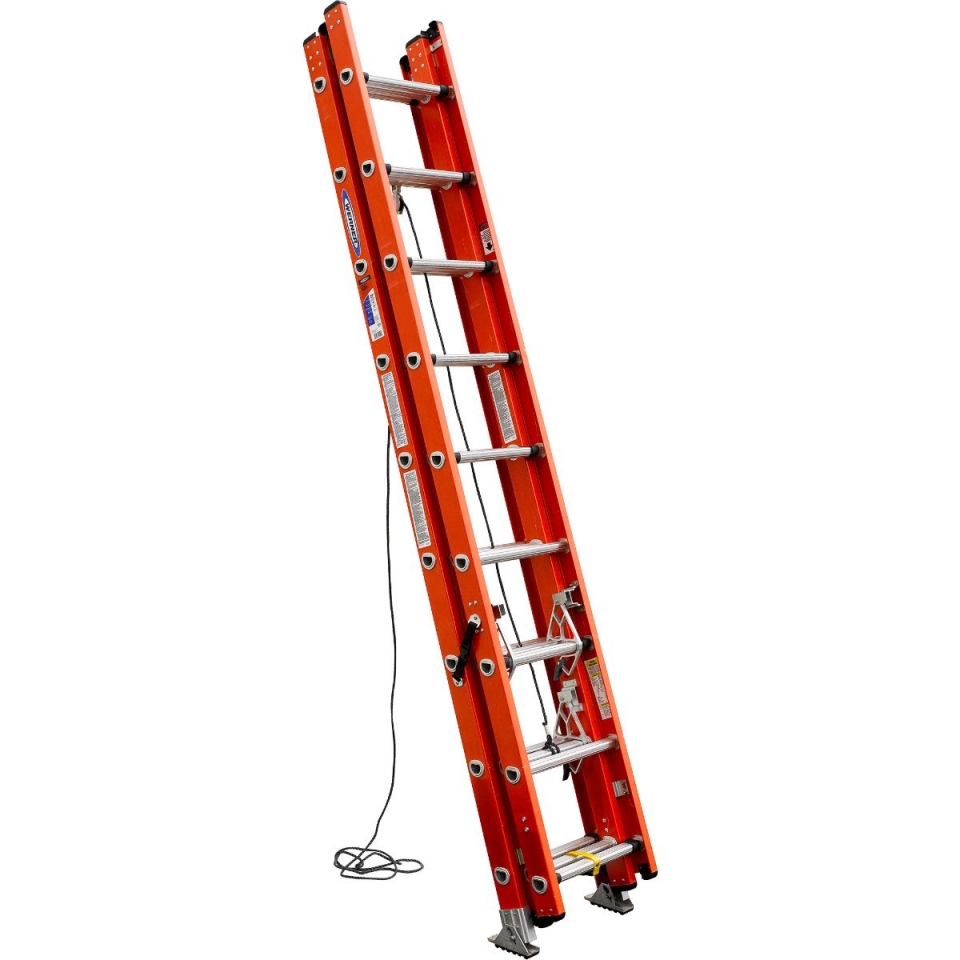

And they’re more rigid than multiuse models used as straight ladders. Extension ladders typically are light for their length and relatively easy to set up. These are your first choice for projects more than 17 feet off the ground.


Models that extend beyond 17 feet can also be extremely difficult for one person to safely lift, maneuver, and fully extend. But they’re relatively heavy and pricey, and harder to set up with their multiple locking points. Multiuse ladders typically reach 12 to 15 feet as straight ladders and tend to be more rigid than stepladders while requiring less storage space than an extension ladder. These multi-folding ladders are designed to be versatile: They can act like a stepladder or an extension ladder and even a scaffold, and can be used on stairs. Some may have pinch points at the spreader bars. But stepladders tend to be less rigid than multiuse ladders, and you can’t use them on stairs. A folding shelf typically holds tools or paint. These uncomplicated and relatively light A-shaped ladders are best for tasks relatively near the ground (maximum standing height ranges from about 45 to 54 inches for 6-foot models). Here are the types of ladders to consider. If you clean your own gutters, you’ll need a taller ladder than you would if you are dusting a chandelier. Which type of ladder you choose should depend on the chores you do most often, inside or out. Some telescoping and multi-use ladders could also crush hands and fingers, and had feet that slid out easily. And we found that even the most stable stepladders twisted enough for their feet to "walk" slightly when we stood on them and simulated the weight shifting typical when painting or sanding. But shoddy design and construction may add significantly to those injuries, judging by some of the testing we’ve done in our labs.įor example, steps on some 6-foot stepladders-the most popular type-bent under a higher-weight version of the industry’s step-strength test we used to account for the stresses of climbing and weight-shifting. The American Ladder Institute, the industry’s major trade group, has attributed ladder injuries mostly to misuse and improper selection. Read the manufacturer’s directions and safety information carefully and be sure you understand them before you start climbing. The ladder shouldn’t deform, tilt, or "walk." Check a multiuse model at the store to see how easy it is to adjust and lock-and ask if you can return it if it proves more challenging than you thought.Įven a ladder that’s rated to hold 300 pounds can fail if you don’t set it up and use it properly.

With stepladders, climb three steps and carefully shift your weight. Includes our custom engineered MAXLOCK that is made from a patented and advanced molecular polymer.Choose the right design and height for the work you do.The Louisville FE4228HD fiberglass extension ladder meets or exceeds the safety standards set by ANSI and OSHA.
#Cuprum ladders parts full
The ladder features outside slide guides, aluminum rung connector plates, D-shaped rungs fully serrated for a slip resistant surface, non-marring rail end caps, rope and pulley, and full heavy duty metal boot with steel swivel safety shoes to be used with the tread down or in spike position. This ladder includes the patented QuickLatch RungLock system that provides a simple, intuitive method of securing the fly and base sections of the ladder when extended. It is equipped with the MAXLOCK rung lock, custom engineered from a patented, advanced molecular polymer, MAXLOCK is the strongest, toughest, lightest rung lock ever made. This Louisville 28 foot heavy duty fiberglass extension ladder has a 375lb load capacity, rated ANSI Type IAA. Louisville Ladder 28-Foot Fiberglass Extension Ladder, Type IAA, 375-pound Load Capacity, FE4228HD


 0 kommentar(er)
0 kommentar(er)
